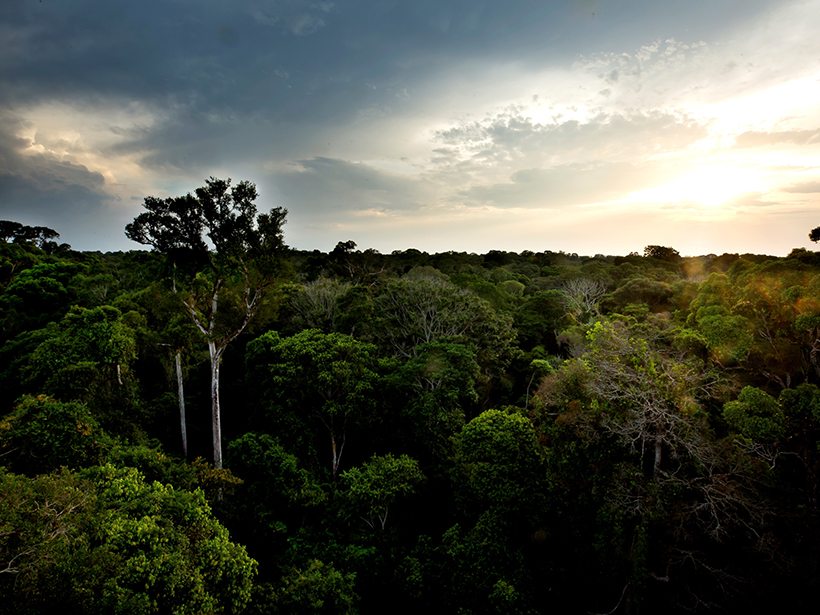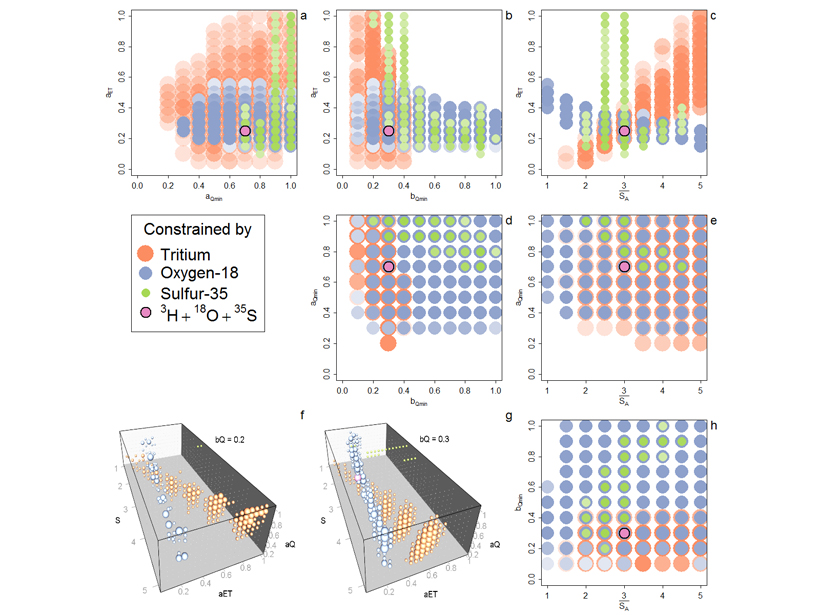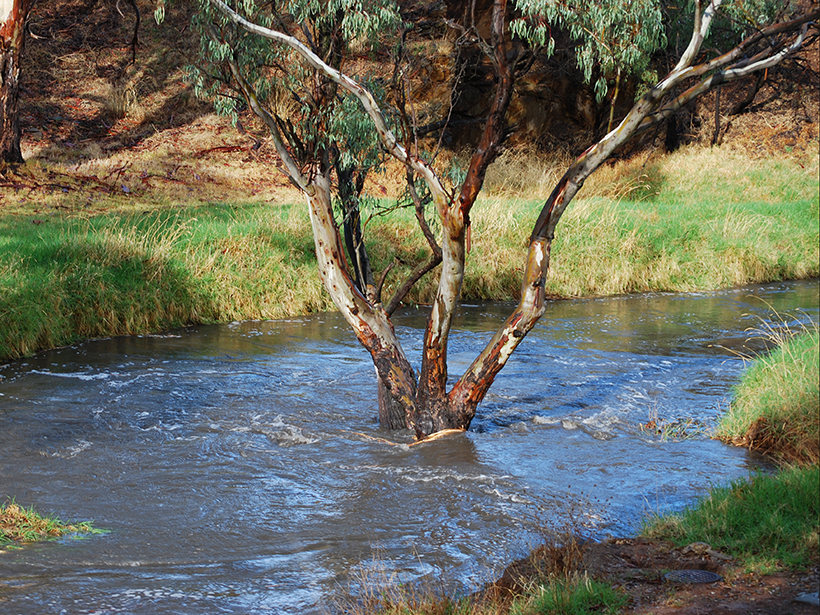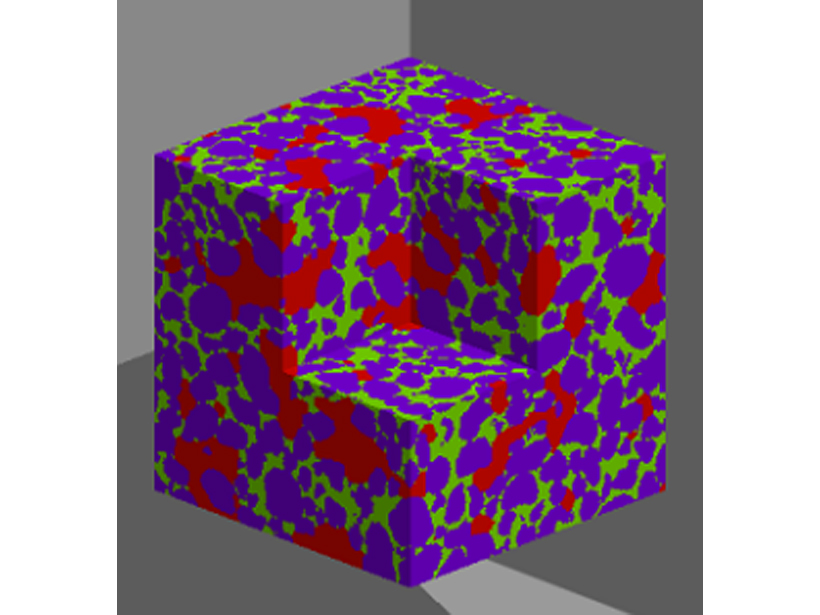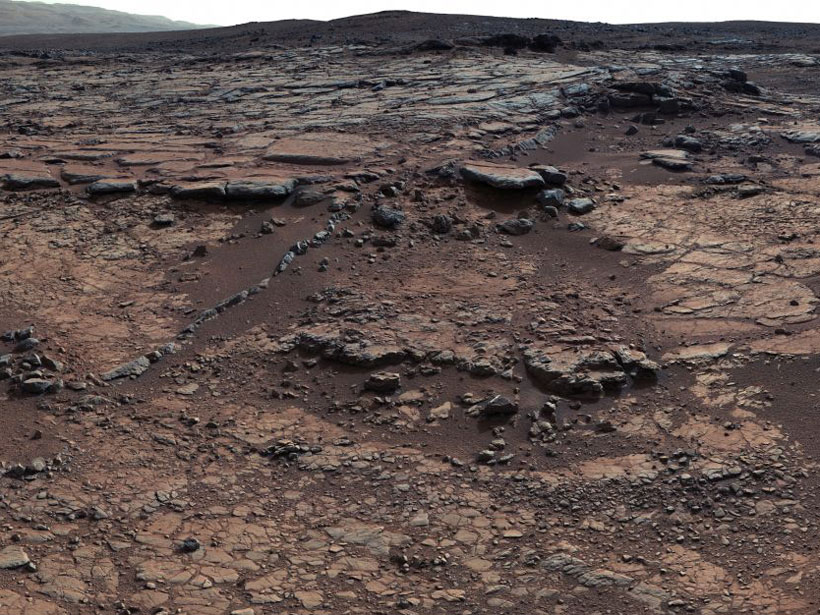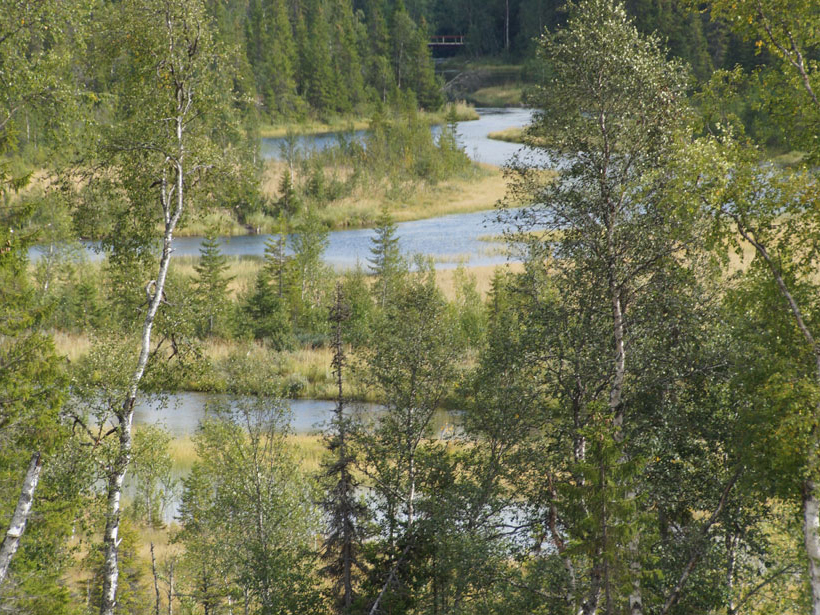Researchers used both terrestrial and marine proxy data to reconstruct the dramatic and dynamic climatic changes.
water cycle
A Simplified Model of Water Vapor Exchange in the Amazon
Evapotranspiration is the exchange of water vapor between land and the atmosphere, and it is hard to measure and model. A new study shows promise for its estimation over large, vegetated landscapes.
Using Radioactive Tracers to Determine the Ages of Streamflow
Radioactive isotope tracers can be used to determine the relationship between the ages of water that is stored in soil and bedrock, water in streams, and the water used by vegetation.
Balancing Robustness and Cost in Hydrological Model Optimization
A new study presents a framework for finding the best optimization algorithm.
Peering into Pores: What Happens When Water Meets Soil?
New research sheds light on the long-standing puzzle of how and why soil water density differs from free water density.
Researchers Bring Early Martian Water Chemistry to Life
Lab experiments constrain conditions necessary for a key mineral to have formed in ancient lagoons and a crater lake.
Organic Particles Affect Carbon Cycling in Boreal Waters
Dissolved organic carbon receives much of the focus in aquatic research, but a new study suggests that bulkier particulate matter may play a significant role in regulating carbon dioxide emissions.
Wada Receives 2018 Hydrologic Sciences Early Career Award
Yoshihide Wada will receive the 2018 Hydrologic Sciences Early Career Award at AGU’s Fall Meeting 2018, to be held 10–14 December in Washington, D. C. The award “acknowledges early career prominence and promise of continued contributions to hydrologic science.”
Massive Scale Evaporative Water Losses from Irrigation
Evaporation can demonstrate the effects of crop irrigation on decadal trends in evapotranspiration at a regional spatial extent.
Studying Soil from a New Perspective
Cosmic ray neutrons probe soil moisture in the Great Plains.


